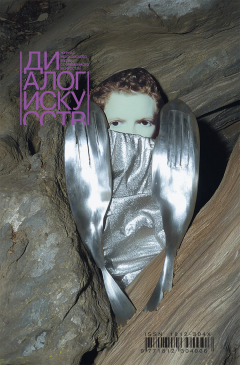In Leningrad corporality was not only a debatable theme but a vital subject of practice and experience. A new type of artist – that in a state of constant flux and metamorphosis – emerged in the 1980s and became dominant by the 1990s. Characteristic of this new breed that appeared simultaneously as artists, rock-musicians, actors, scientists, politicians and so on was the fact that none of these performances were real. In the USSR, the generation who matured in the 1970s regarded a “floating” identity as normal. In Leningrad, which was the center of narcissism and style, people created and cherished their avatars as artworks and used them as a tool for communication and making art. While in conversation with Azerbaijan-born Tahir Salahov, who was the Chairman of the Artists’ Union of the USSR, Timur Novikov introduced himself as Teymur, in the Orthodox environment he old-fashiondly called himself Timofey Petrovich; Novikov combined within himself a gay-activist and a traditional conservative; the grey-bearded venerable elder could at once transmogrify into a stylish young man. One of the epitomes of Petersburg’s narcissism was Vladik Monroe. He would transform himself not only in front of a camera or for show but behaved like this even when alone – he simply lived as he pleased. Monroe was always in the here and now, his identity changing with the tide, rendering the artist a gliding and elusive figure. Like Guryanov and Novikov he was a person whose passion knew no bounds. These willful people saw the world as a continuous adventure, both an emotional and sensory experience, and the turmoil of their time only reinforced the thrill they felt as marauders in the open sea.
The variety of “avatars” provided an enabling environment for young people who at times didn’t even consider themselves artists. They were producing art for themselves and their friends at the same time as having a good time. The fact that a person was simultaneously an artist, a musician, a filmmaker, a fop, a writer or an actor was in the natural course of things. This phenomenon became known as “Petersburg titanism”. Anyone somewhat dislocated from reality or venturing out into another world was considered an artist. It was not one’s output that made one an artist but one’s whole life that became a totalizing creative practice.
DI #6-2017




